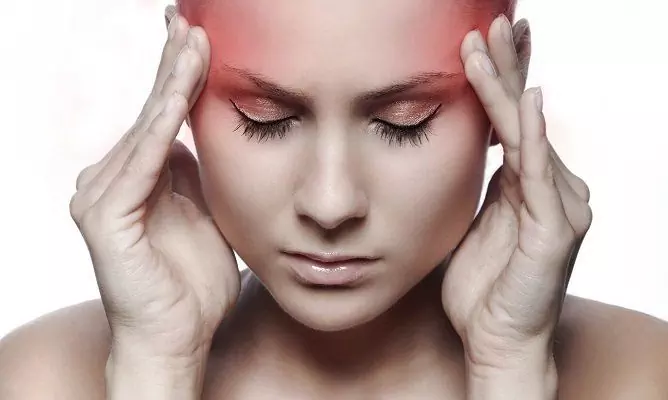- Author Rachel Wainwright [email protected].
- Public 2023-12-15 07:39.
- Last modified 2025-11-02 20:14.
Microstroke: symptoms, treatment, prevention
The content of the article:
- Microstroke - what is it?
- Symptoms of a microstroke
- Who gets a microstroke
- Diagnostics
- What is the difference between a transient ischemic attack and a stroke
- Consequences of a microstroke
- Video
Microstroke, or transient ischemic attack (TIA), is an acute disturbance of cerebral circulation, which is characterized by the same morphological consequences for the body as a stroke, but differs in transience, less vivid symptoms and full restoration of all functions within an hour. Nevertheless, there may be consequences of a micro-stroke, which are important to recognize and compensate in time.
Microstroke - what is it?
Brain tissues are among those that consume the most oxygen. When cerebral circulation is disturbed, they undergo hypoxia, due to which they lose their functions, drop out of the coordinated mutual regulation of the nerve centers.

Patients often do not recognize a microstroke, mistaking it for a temporary malaise
A microstroke occurs when blood flow stops in a small blood vessel in the brain. This can happen for a number of reasons:
- blockage by a blood clot;
- vascular aneurysm - at the site of the aneurysm, blood is retained and flows more slowly, which is a risk factor for thrombosis, as well as stretching of the vessel wall with subsequent rupture;
- congenital vascular anomalies;
- vasculitis - lead to thickening and deformation of the vascular wall, obstruction of the lumen;
- disorders of the blood coagulation system.
The main points are listed, however, in fact, a stroke is a polyetiological disease, that is, caused by the action of several factors.
Symptoms of a microstroke
Unlike a stroke, a transient ischemic attack affects a tiny area of the brain, so sometimes patients do not even notice how it manifests itself. The pathology does not manifest itself so acutely as to lead to urgent hospitalization. But you can determine the disease if you pay attention to the symptoms:
- headache, not eliminated or poorly eliminated by analgesic drugs;
- weakness, numbness of the limbs, numbness of the face - if a person is faced with the fact that he is suddenly overcome by weakness, drowsiness, or the fingers do not obey him well, this is an alarming sign. Any disturbance of innervation, both motor (motor) and sensory, may be evidence of brain damage;
- dizziness;
- temporary visual impairment, inability to focus on one point, clouding and darkening of the image in one eye, which then passes to the other;
- speech disorders, unclear pronunciation, inability to collect thoughts and make a sentence;
- disorder of coordination - the patient tries to sit down from a strong feeling of disorientation in space, staggers, his gait is disturbed;
- diplopia (double vision);
- difficulty swallowing (dysphagia);
- behavior disorders - the patient does not answer for a long time, looks around aimlessly, etc.
With a transient ischemic attack, these symptoms are usually not all and not fully manifested. For example, a person may complain of numbness in their cheeks or lips, while their condition is generally satisfactory. Severe symptoms disappear within 20-60 minutes. How to recognize a disease, distinguish it from ailment? First of all, complaints about the above sensations should not be ignored - when they appear, you should consult a doctor, even if they quickly stopped.
The initial symptoms of a microstroke in men are even less pronounced than in women, besides, men are more inclined to shrug off the malaise. The first signs of the disease in them often go unnoticed, but the main marker is persistent headache, which does not disappear after taking pain relievers.
Symptoms of a microstroke in women are more pronounced. Women tolerate an ischemic attack worse, react more sharply to headache and are more attentive to other signs.
In any case, if there is any suspicion, especially in those at risk, it is necessary to consult a doctor, since transient ischemic attacks are often precursors of a large stroke, which can have much more serious consequences.

To diagnose a microstroke, they resort to magnetic resonance imaging or computed tomography
Who gets a microstroke
Risk factors have been identified, the presence of which (one or more) indicates a high statistical probability of developing a transient ischemic attack, as well as a major stroke:
- Essential hypertension - a persistent increase in blood pressure significantly increases the risk of vessel rupture or degeneration due to constant hydrodynamic pressure.
- Atherosclerosis - the cerebral (cerebral) form of atherosclerosis leads to the deposition of lipids in the wall of the vessels of the brain. Over time, an atherosclerotic plaque forms, which blocks the vascular lumen.
- Heart failure - the condition leads to dysfunction of the entire cardiovascular system, and when the vascular element loses the ability to compensate for the uneven work of the heart, circulatory disorders occur.
Individual risk factors also include:
- old age - the older a person is, the less elastic fibers in his body, which are the frame of many structures. When they are lost, the vessels lose the ability to adequately perform their function;
- excess weight - bad for the state of blood vessels;
- unbalanced diet - junk food, trans fats and cholesterol, lack of a sufficient amount of trace elements and vitamins, lack of water adversely affect both blood vessels and blood circulation;
- lack of healthy physical activity - an untrained heart and vasomotor center cannot fully provide sufficient nutrition to the brain.
- bad habits - smoking leads to hypertonicity of blood vessels, especially small ones, which damages their wall; alcohol impairs the rheological properties of blood, has a bad effect on blood vessels, and in large doses damages the liver, the main regulator of osmotic pressure on a par with the kidneys;
- diabetes mellitus - affects almost all metabolic reactions in the body, and also significantly worsens the state of blood vessels;
- chronic overwork, stress, lack of sleep.
Diagnostics
The diagnosis of "transient ischemic attack" is established after going to the doctor and conducting an examination, which, in addition to collecting complaints and anamnesis, includes an ECG, general and biochemical analysis of blood, urine, auscultation of the heart. The arbitration method in making a diagnosis is MRA (magnetic resonance angiography) - it allows you to identify an ischemic focus in the brain tissue.
What is the difference between a transient ischemic attack and a stroke
It is important for clinicians to differentiate a transient ischemic attack from a full stroke. First of all, attention is paid to clinical manifestations - with TIA, there is no extremely intense headache characteristic of ischemic stroke.
In the case of a transient ischemic attack, speech disorder, paralysis of facial muscles, a distorted grimace on the patient's face and other signs of a stroke can also be observed, but they quickly pass.
A stroke manifests itself with lightning speed, and with a microstroke, the symptoms can increase for several hours, after which they involution.
In terms of the degree of organic damage, a transient ischemic attack affects only a small cluster of nerve cells fed by one capillary. A stroke leads to the loss of full-fledged nerve centers of the cortex and subcortex.
Consequences of a microstroke
A transient ischemic attack in itself does not pose the same danger as its possible complications. About 15% of patients after TIA undergo a full-fledged ischemic stroke, often within two days after the onset of TIA.
The ischemic focus in the brain is replaced by connective tissue, after which the nerve cells in it no longer come back to life.

After a microstroke, you need to see a doctor to minimize the risk of developing a major stroke
The risk of developing heart disease increases significantly, because if ischemia occurs in the brain, the risk of a similar hemodynamic disorder increases in other systems. People who have undergone a transient ischemic attack should normalize their blood pressure and be monitored regularly by a cardiologist.
Despite the fact that the patient's recovery after a transient ischemic attack occurs rather quickly, the condition requires treatment. Therapy is usually carried out at home.
Drug treatment consists in prescribing drugs of the following groups:
- thrombolytics (fibrinolytics) - dissolve dense blood clots, restoring vascular patency and eliminating ischemia;
- anticoagulants (Heparin, Warfarin, Neodikumarin) - used to prevent intravascular coagulation;
- antiplatelet agents (Aspirin-Cardio) - slow down the adhesion of platelets and their release of biologically active substances;
- antihypertensive drugs - help maintain blood pressure within normal limits;
- nootropic drugs - contribute to the normalization of cognitive functions;
- angioprotectors - agents that strengthen the vascular wall.
The patient is shown moderate and regular physical activity (the ideal option is walking in the fresh air at a slightly accelerated pace compared to the usual pace), blood pressure control, proper nutrition (refusal of fatty foods, an abundance of salt and spices, adherence to the diet), correction of excess weight, giving up bad habits. These measures are not only curative, but also prophylactic, their observance can significantly, several times reduce the risk of developing repeated ischemic attacks.
Video
We offer for viewing a video on the topic of the article.

Nikita Gaidukov About the author
Education: 4th year student of the Faculty of Medicine No. 1, specializing in General Medicine, Vinnitsa National Medical University. N. I. Pirogov.
Work experience: Nurse of the cardiology department of the Tyachiv Regional Hospital No. 1, geneticist / molecular biologist in the Polymerase Chain Reaction Laboratory at VNMU named after N. I. Pirogov.
Found a mistake in the text? Select it and press Ctrl + Enter.






